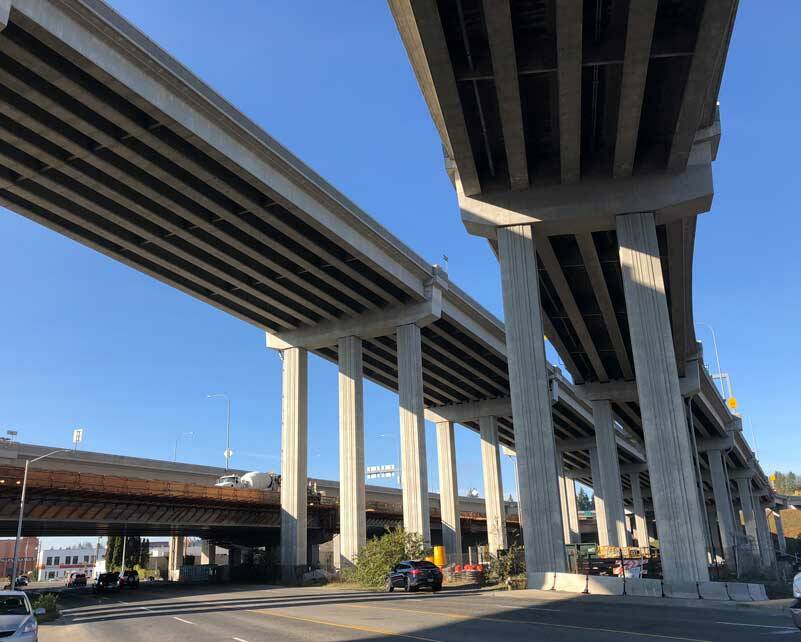By Morf Morford, Tacoma Daily Index
Earth Day was April 22. The month of April, for many, was celebrated as Earth Awareness Month.
The month was commemorated by neighborhoods, agencies and individuals in different ways. From de-paving to picking up litter to tree-planting, churches, neighborhood groups and official agencies sponsored and advocated for taking on those aspects of litter, noise and pollution that degrade communities.
Earth Day was first established in 1970. Back then, the emphasis was on litter and air pollution.
As with everything else in life, we’ve learned that pollution is a bit more complicated – in its sources, its appearance and its impacts. Pollution, its impacts and its remediation, is vastly more invasive and evasive than most of us could have imagined back when Earth Day was first established. From nano-plastics to lead in our water systems, all kinds of toxic and generally unwelcome substances seem to be everywhere from our tap water to our bloodstreams.
Many cities and communities, including our fair city, have policies meant to increase our tree canopy which has a direct impact on heat impacts and quality of life in neighborhoods.
But, on a local basis, when it comes to the environment, the Tacoma area has had a horrible, no good, very bad month.
Smoke on the water
April gave us two difficult situations at the Port of Tacoma – the Kodiak on fire on the Hylebos, and the Pacific Producer essentially abandoned on the Foss.
The fire burned for several days beginning Easter weekend, and the Kodiak had ample toxic/flammable/potentially explosive materials, from oil to freon (55,000 gallons of diesel and 19,000 pounds of freon). The freon released (almost 10 tons) during the Kodiak Enterprise fire will do as much damage to the global climate as burning more than 1.5 million gallons of gasoline.
A shelter-in-place order was issued for the nearby neighborhoods of Brown’s Point and NE Tacoma. Smoke was visible from many points in and around Tacoma. This story was covered briefly by the national news services.
Manufacturing or importing freon was prohibited in 2020 in industrialized nations. Freon already produced can be used or stored semi-indefinitely.
In 2019, Trident, the owner of the Kodiak and the largest seafood company on the West Coast, with a fleet of 37 ships, paid a $900,000 fine for repeated leaks from its fish-freezing facilities. The Environmental Protection Agency accused the company of repeatedly failing to repair coolant leaks within 30 days as required, resulting in 100 tons of harmful refrigerant escaping to the atmosphere between 2009 and 2016.
Not on fire, but…
The Pacific Producer, a large fishing vessel, has been tied up at the old Martinac shipyards on the Thea Foss Waterway since early August. The ship is 77 years old, nearly 200 feet long, and has a long history of environmental and safety concerns. And accumulated fines. And no plans for departure or repair.
Tree canopy to pavement
If you look at an aerial photo of the Port of Tacoma, you will see a lot of pavement and buildings and very little green space. And you’d think that the remaining green space would be protected – especially when it is officially recognized as a “critical area wetland” and an osprey nesting area and a crucial nesting/migratory/feeding area for thousands of native birds. But no, that area is scheduled for bulldozing and paving. If it hasn’t happened already.
One mega-warehouse to rule them all
A rare sight in South Tacoma – a 150 acre open green space has been approved for development. This will include construction of four buildings totaling approximately 2,500,000 square feet. These warehouses are estimated to produce an additional 8,000-12,000 vehicle trips each day on and around I-5.
The statement from the city acknowledges that “Several critical areas are located on the site including wetlands, a stream, Fish and Wildlife Habitat Conservation Areas (Biodiversity Areas) and floodplains.”
“Wetland and stream buffer averaging” is proposed for some of the wetlands areas – which includes at least one stream (which will be re-routed).
If you know that area of South Tacoma, you know that, while most of the Pacific Northwest is known for its trees, very few are found in that area. You’d think that a green area of that size would be preserved and protected. But again, you’d be wrong.
Approval of this project was released over Earth Day weekend.
Oddly enough, the Wall Street Journal (among many others) has noted the rapid decline in the “demand” for warehouse space. The need and “demand” for green space and increased tree canopy is not in decline.
Comments or questions can be directed to Shirley Schultz, Principal Planner, Planning and Development Services Department, 747 Market Street, Room 345, Tacoma, WA 98402 or sschultz@cityoftacoma.org | 253-345-0879.
What we say vs. what we do
And, in a double-blow against the environment and affordable housing, more than 20 housing units in some of Tacoma most historic homes (all were built between 1889-1905) wre recently demolished to make room for a parking garage. These homes on the 500 block of South L street could have been moved or at least de-constructed and their timber and stone reused. But no; it all went to a landfill.
Tacoma, as always it seems, has a peculiar way to “celebrate” Earth Awareness Month.





